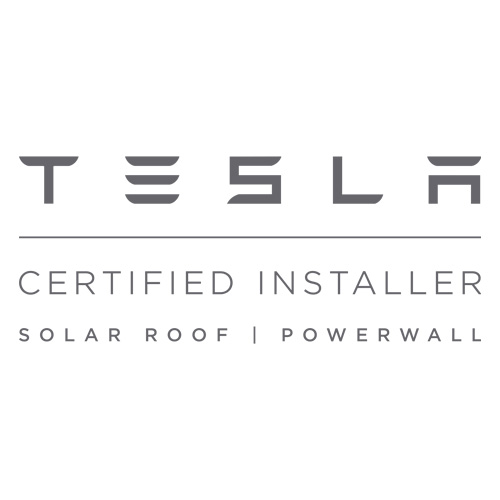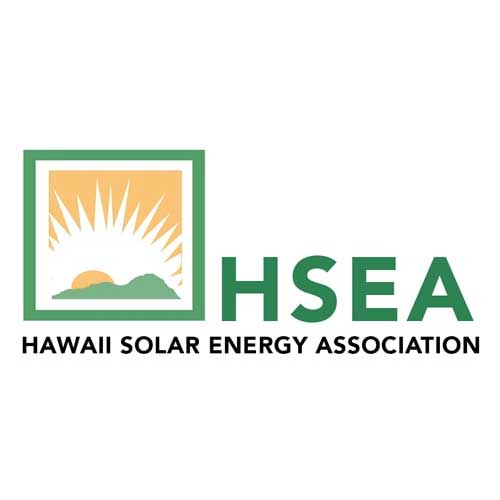Why Are People Against Solar Farms?
Solar farms are a growing trend, but many people are against them. In this blog post, we’re going to explore the six main reasons why people are against solar farms. We’ll look at how they are ugly, take up too much space, are a waste of money, kill animals, don’t work, and are a fire hazard. By the end of this post, you should have a better understanding of why people are against solar farms and why you might want to think twice before installing one on your property.
1. People Are Against Solar Farms Because They Think They Are Ugly
People have become increasingly concerned about the effects that solar farms have on their local environment, with some believing they are an eyesore. Solar farms are large outdoor installations of photovoltaic panels that allow energy to be generated from sunlight, and while they are a great way to produce renewable energy, many people oppose them based on aesthetic reasons.
The visual impact of solar farms has been a major point of contention for opponents, as the vast array of panels can often appear quite stark against the natural landscape. They are typically placed in rural areas, meaning they stand out even more as a blot on the landscape for locals. Some people also consider them ugly due to their uniformity; when placed in rows and columns, these panels can look rather plain and lack the variety found in nature.
Solar farms are often criticized for taking up valuable land that could be used for other purposes such as agriculture or recreation. This is especially pertinent in regions where there is limited space available for development. Furthermore, some people feel that solar farms displace wildlife habitats by preventing vegetation growth and disrupting local flora and fauna which could negatively affect biodiversity in a region over time.
Solar farms create jobs, help the environment, and protect our health by reducing pollution. In addition, some people think solar farms are beautiful and modern-looking. If you’re one of these people, then you should support solar farms – they’re worth it!
2. People Are Against Solar Farms Because They Believe They Take Up Too Much Space
Solar farms are a growing trend, but they’re not everyone’s cup of tea. Many people are against them because they think they take up too much space, they can be an eyesore, and they can impact property values. In addition, solar farms can interfere with farming and other land uses, be a danger to wildlife, and create a lot of heat – both in the daytime and at night.
Solar farms are large installations that use panels to convert sunlight into electricity. They’re becoming popular because they have the potential to generate a lot of energy quickly and without using any fossil fuels. However, there are some downsides to solar farms that should be considered before making the decision to install one.
First and foremost, solar farms do take up a lot of space. Depending on the size of the farm, it could occupy as much as one-fifth or one-half of an acre! This is not only an issue for landowners; it’s also a problem for residents who live near solar farms because they may experience noise or light pollution from the panels.
In addition to taking up space, solar farms can also be an eyesore. These large installations can often look like factories or military bases – not exactly what you’d expect in rural areas. In fact, some people have even gone so far as to call them ugly monstrosities.
Lastly, solar farms can impact property values by decreasing the value of nearby land if it’s located within sight or sound of the farm. This is especially true if there is already significant development nearby – developers may prefer to build on farmland instead if it’s close enough to a solar farm installation!
All things considered though, there are many benefits associated with installing a solar farm – especially when compared with traditional forms of energy generation such as oil or coal plants. If you’re interested in learning more about how these plants work or whether you could benefit from installing one on your property someday soon – contact us today!
3. People Against Solar Farms Mostly Don’t Understand Solar Energy
There is a lot of debate surrounding solar farms, and for good reason. Solar farms are a waste of money, they are visually unappealing, they can be dangerous to wildlife, and they are not a reliable source of energy. In fact, solar farms have been widely criticized for being one of the most expensive and least efficient forms of energy generation out there. Let’s take a look at each of these reasons in more detail.
First and foremost, solar farms are a waste of money. In order to generate any sort of meaningful amount of electricity from a solar farm, you need to invest millions – even billions – of dollars into the project. Not only is this an expensive proposition on its own, but it also doesn’t provide much return on investment (ROI). In short, solar farms are not worth the investment when compared to other forms of energy generation like coal or oil.
Second, solar farms are visually unappealing. Many people see them as an eyesore and something that detracts from the beauty or charm of their surroundings. This is especially true in areas where there is already considerable development taking place – like rural areas or seaside towns – which can make these installations extremely controversial.
Thirdly, solar farms can be dangerous to wildlife if they’re not properly constructed or maintained. If something goes wrong with the installation (like a faulty panel), it can be harmful to both animals and humans who may get caught in the crossfire. Additionally, if wildlife gets too close to the panels they could get injured or even killed as a result.
Fourthly, solar panels aren’t very efficient when compared to other forms of energy generation like coal or oil. Even though photovoltaic cells convert sunlight into electricity at an impressive rate (around 23%), this still only generates around 1-2%of the power that coal or oil does per unit area. This means that you would need far more panels than necessary in order for them to generate any sort meaningful amount of electricity from a solar farm. Plus, once you have installed all those panels it becomes incredibly costly and difficult (and time consuming) to keep them running smoothly.
And finally, fifthly, solar farms are expensive to build and maintain. This is especially true if you’re building your own farm rather than relying on someone else’s infrastructure. Not only do you need access to large amounts of sunshine (which isn’t always easy), but you also need skilled professionals who know how to construct these systems correctly. And since most people don’t have access to both sunlight AND skilled professionals, most solar farms end up being built by large corporations instead.
4. People Are Against Solar Farms Because They Kill Animals
One of the main reasons why people oppose solar farms is because they can disrupt wildlife habitats and lead to the displacement of native species. This is especially true when the land used for solar farms was once home to various species such as birds, rabbits and other small mammals. Additionally, more sophisticated installations such as those using heliostats can create a “snow globe effect” which involves reflecting light off mirrors back onto one area creating unnatural levels of light and heat which can disrupt ecological systems as well as bird migration patterns.
Moreover, another issue presented by solar farms is animal collisions with photovoltaic panels. Birds or bats flying too close to the panels can get caught in their wake and die from either electrocution or impact trauma with the ground below them. Although steps have been taken to try and reduce this risk by giving panels an anti-reflective coating that breaks up reflections from the sun, there is still evidence suggesting that even these preventative measures are not enough to stop all instances of animal-related fatalities caused by solar panels (e.g., recent studies conducted in California).
Aside from this, another argument presented against solar farms is that they require vast amounts of land space which could otherwise be used for purposes such as farming or conservation efforts—thus leading to further habitat destruction for animals who live in these areas. While it’s true that solar energy does have much potential when it comes to reducing our reliance on fossil fuels and other forms of non-renewable energy sources, it should also be noted that its implementation needs to take into consideration any potential risks posed towards local biodiversity first before any construction takes place.
5. Solar Farms Don’t Work Because Of The Environment
Are you against solar farms? If so, you’re not alone. Many people are against these ugly, wasteful structures because they don’t think they work and they are a waste of money. Solar farms are supposed to be a way to generate energy from the sun, but according to many experts, they simply don’t work.
Solar farms use up a lot of valuable land and kill animals in the process. They also generate very little power – sometimes as little as one-tenth of what is promised. In fact, solar farms have been shown to actually be a net drain on society, costing more money than they ever generate in profits.
So why do we keep building them anyway? Maybe it’s because people think they’re going to be popular – or beautiful – once they start going up. But the truth is that solar farms are ugly and no one wants them around. They clash with traditional farming practices and look like something out of a science fiction movie instead of an everyday part of our landscape. If you’re against solar farms for any reason other than their effectiveness, now is the time to voice your opinion loud and clear!
6. People Are Against Solar Farms Because They Cause Fires
There are a lot of people out there who are against solar farms. They think that solar farms are a fire hazard, an environmental hazard, and a noise nuisance. While these charges may have some basis in reality, there are also some good reasons to support solar farms. Let’s take a closer look at each of these concerns and see if there is actually anything to them.
First, solar farms are a fire hazard. Solar panels can be damaged by heat or flames, which can then lead to fires. In addition, solar farms can generate electrical fires – something that is not only dangerous but also difficult to contain. Finally, solar farms can create traffic hazards due to the large number of vehicles that will be needed to transport equipment and personnel to and from the farm.
Second, they can cause electrical fires. Solar panels produce electricity through the conversion of sunlight into usable energy, but this process can also create sparks that could start small fires. In addition, damaged or malfunctioning wiring in solar panels is another common source of electrical fires. Finally, when large numbers of people are working close together in close quarters (as is often the case with solar farms), accidents happen more easily and with greater severity because of the potential for chaos and violence.
Thirdly, they can create visual eyesores with their sprawling arrays of white plastic panels stretching across acres of land.. Not only do these arrays look bland and uninviting from a distance – they’re also hard to see from up close since they blend in so well with surrounding vegetation.. This problem becomes even worse when storms roll in and water covers part or all of the panel array – hiding it from view until it rains again.. This means that residents living near solar farm installations may never know when one has gone up because their view has been blocked! Worse yet – if you live near one you may find yourself subjected daily to dazzling flashes as powerful arcs fly across your vision as technicians repair or replace panels!
Fourthly, they can be a noise nuisance.. Because most solar farms require large amounts of sunlight during certain hours (when it’s not raining), they generate lots of noise during those hours.. Not only does this bother people who live near them day-and-night but it’s also disruptive enough as it is during normal business hours.. Furthermore, high winds often whip around these structures making them howl like banshees at night.. Some people have even claimed that being next door to a large scale solar farm makes them sick!
Fifthly, they pose dangers both onsite and offsite.. Solar panel arrays need regular maintenance – which usually entails climbing up on top where there is potential for falls.. If someone were injured while performing this work then not only would their injury likely result in financial damages but additional health complications could occur as well.. Just last month two workers were killed while working on a nearby installation belonging to either side currently under construction.. And finally, should an evacuation ever be necessary due to weather.
All In All
In conclusion, while there are certainly benefits associated with using solar farms as an alternative energy source – particularly in terms of reducing carbon emissions and providing clean electricity – it’s critical that we consider both direct and indirect social costs before moving forward with any project in order ensure sustainable progress going forward for decades into our collective future(s).









